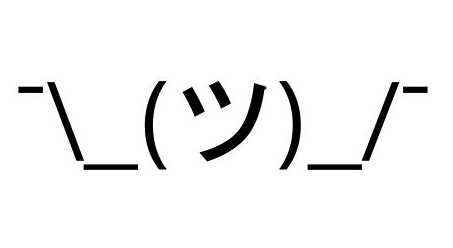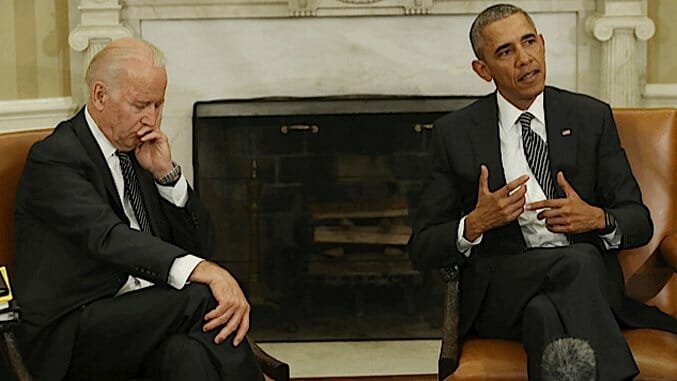Now that Donald Trump and Hillary Clinton have separated themselves as the presumptive nominees, we are beginning to hear more and more about potential Vice Presidential candidates. There is even VP speculation for candidates who aren’t even running, as Elizabeth Warren was rumored to be on Joe Biden’s nonexistent ticket (Warren, by the way, is definitely not going to be Hillary’s pick for VP, because Massachusetts’s GOP governor Charlie Baker would most certainly replace her with a Republican in the Senate). With so much attention paid to this selection in the media, one would think the VP is a vitally important position.
However, as far as the actual governing body of the Executive Branch is concerned, the VP might as well be its appendix. There is no harm in its existence, yet as far as allocated constitutional powers go, the Vice President has slightly more control over the mechanisms of Washington than you or I do.
Because everything the founders did was created out of a fear of centralized power, they initially created the office of the Vice Presidency as a consolation prize to the runner up in every Presidential contest. This setup was inevitably fractured by America’s fourth election, when Thomas Jefferson and Aaron Burr tied in the electoral college and nearly caused a riot in the House of Representatives, which finally elected Jefferson President on the 36th ballot. The 12th Amendment was soon ratified in 1804, freeing each party to choose their own Vice Presidential candidate. Franklin D. Roosevelt bucked that precedent in 1932 and bypassed his party, selecting John Nance Garner as his running mate, who famously derided the office as “not worth a pitcher of warm spit.”
During the New Deal era, the influence of the Vice President expanded in kind with the rest of the Federal Government and rose from there. Between the eight years from the end of Richard Nixon’s Vice Presidency to the beginning of his Presidency, the VP’s staff increased by over 300 percent. Walter Mondale, Jimmy Carter’s running mate, further expanded the office’s influence, as he was the first VP to schedule weekly policy meetings with the President.
In the 2000s, Dick Cheney stretched the limits of the office further than any man before, as he took it upon himself to attend Republican Senate meetings. Jonathan Mahler of the New York Times claimed that “you could set your watch by the arrival of Vice President Cheney’s motorcade on Capitol Hill for the Republican caucus’s weekly strategy sessions.”
Joe Biden followed and scaled back what was essentially a 2nd Presidency created by Dick Cheney, with Obama describing his role as such: “The best thing about Joe is that when we get everybody together, he really forces people to think and defend their positions, to look at things from every angle, and that is very valuable for me. I also know, when he gives me his advice, he gives it to me straight.”
Save for Dick Cheney, the Vice President has essentially just been another adviser to the President. There is no legislative utility to the VP other than breaking ties in the Senate, and making sure they keep breathing in case something should happen to the President. So given the importance afforded to the position, that must mean that their value comes on the campaign trail.
However, there is very little data that suggests the Vice President actually makes a difference to the electorate. Let’s be real, these wannabe stock photos from Paul Ryan working out alone in a bunker certainly didn’t help Mitt Romney expand his appeal amongst young Americans in 2012. Ryan could not even help Romney win his home state of Wisconsin in a year where it was very much up for grabs.
Typically, the Vice President is there to buttress the Presidential candidate’s weaknesses. Barack Obama was young and inexperienced, so he tapped one of Washington’s most accomplished legislators in Joe Biden as his running mate. George W. Bush did the same thing with Dick Cheney. John Kerry and Mitt Romney followed suit, but in reverse with John Edwards and Paul Ryan. John McCain must have had a similar mindset when he selected Sarah Palin, but that mindset was tinged by a fatal dose of Honey Boo Boo.
So the question becomes, does the VP really matter on the campaign trail? After all, everyone knows the job is mostly symbolic anyway.
Sarah Palin certainly seemed to matter in the 2008 election, and not in a good way. One month after McCain announced her as his running mate, Barack Obama passed him in the polls for the final time, turning what was a back and forth slugfest into a complete and utter blowout. One study suggested that Palin cost McCain about 2 million votes, but luckily for her, she will never find this out since she doesn’t read the newspaper.
John McCain probably wishes he could get a do-over on that one, or at the very least go back to the era where Vice Presidents were selected by parties at conventions, which are typically held in August. Looking at Gallup’s data for every election going back to 1932, the complexion of the race did not change much from August to the final day of the campaign, save for 1960. JFK and Nixon flip flopped in nearly every poll right down to the finish, but given their popularity within their parties at the time, it’s unlikely that either Lyndon Johnson or Henry Cabot Lodge moved the needle for the electorate much more than the men at the top of the ticket did.
It seems improbable that the VP will ever inspire a bunch of Americans to vote for a flawed Presidential candidate, but the central value VP’s allegedly have is carrying their home state. Hell, it’s pretty much the only reason anyone still says John Kasich’s name. If he were the governor of Indiana instead of Ohio, I’m not sure many in the Republican Party would even acknowledge his existence given his relatively mainstream views.
Yet, there was no election in the past half century where a Vice Presidential candidate capably demonstrated their value in the state they call home, save for one mostly fruitless example. Walter Mondale, Jimmy Carter’s VP, helped the Democrats carry Minnesota in 1976 four years after they lost the state to a now-disgraced Nixon. The Democrats won Minnesota again in 1980, but the entire country voted against Jimmy Carter except for Maryland, West Virginia, Rhode Island, Georgia, and Mondale’s aforementioned native state.
Other than Mondale, there are only four instances in the last half-century of a party winning the VP’s home state the Presidential election immediately after they lost that state, and the average Electoral College result in those four elections was 402 to 131. One can safely assume that the VP’s home state was simply following a national trend. The only election in that sample which was not a complete blowout came the last time America had a serious third party candidate.
Looking back to 1992, it seems as if Al Gore really helped Bill Clinton win his home state of Tennessee, as he reclaimed it for the Democrats after losing it to George H. W. Bush in 1988. When it comes to that election, everything is distorted by Ross Perot crashing the two party system, but it does not seem as if Perot helped give the vote to Clinton by taking votes from Bush, as Perot under performed in Tennessee compared to its neighboring states. However, Gore handily lost Tennessee when he ran for President eight years later, so the best explanation for this whole ordeal can be summed up as follows:

Given how little the Vice President actually does in their day to day job, combined with the lack of any concrete proof of their positive value on the campaign trail, the VP seemingly exists only to provide more vacuous content for our incessant 24 hour news networks. Perhaps it’s time for a re-evaluation of America’s most overrated position in government.

